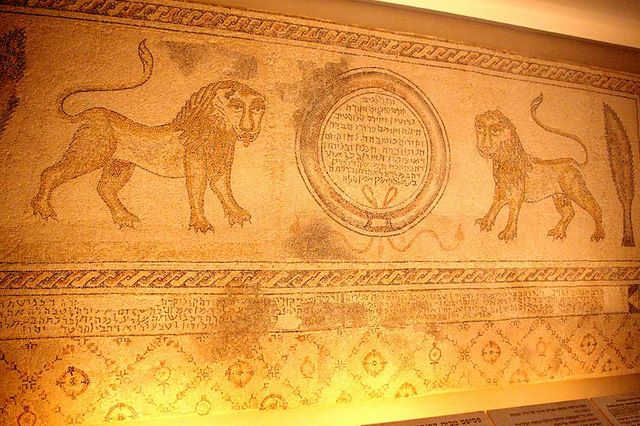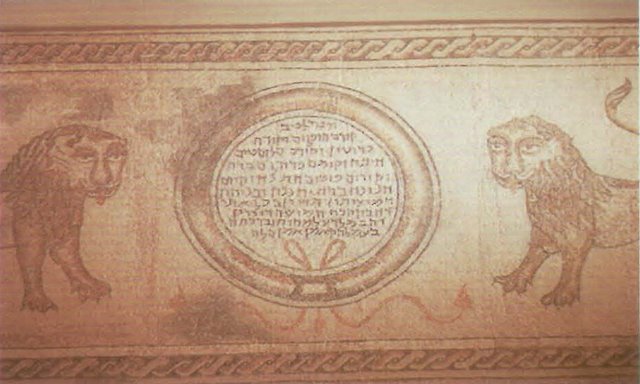Jews apparently settled in Hamat Gader even before it was conquered by Alexander Janneus, the Hasmonean king (103-76 B.C.). When Herod ascended the throne he established colonies of Jews on the Golan, and this contributed to the Jewish settlement in Hamat Gader. In the second century A.D., scholars used to meet at Hamat Gader during the bathing season to hold their discussions there. Judah Hanasi (head of the country’s Jewish community) also joined in this custom, as is mentioned in the Talmud.
The synagogue that was excavated at Hamat Gader is similar in its building style to other synagogues of the fifth and sixth centuries that were found in Galilee. It is generally thought to have been built in the fourth century A.D. The synagogue is located in a complex of buildings with paved rooms and courtyards leading to the synagogue. Benches along the walls of a large room next to the synagogue indicated that it was used for study, or that it was a women’s court.
A magnificent mosaic and several Aramaic inscriptions acknowledging the donors to the building – some of whom came from neighboring villages – were found on the floor of the synagogue. Today its floor is exhibited in the foyer of the Supreme Court building in Jerusalem.
The carpet in front of the bema is the most elaborate, with two cypress trees and two lions facing the center and a wreath surrounding a dedicatory inscription which ends as follows-
…whose acts of charity are constant everywhere and who have given here five coins of gold. May the King of the Universe bestow the blessing upon their work. Amen. Amen. Selah
After World War I Hamat Gader and the road leading to it were included in the area of the British Mandate, and during this period Jews and Arabs (mainly crowds of Bedouins) visited the baths. The Damascus-Haifa railroad track passed alongside the Yarmuk River, and one of the bridges of the track (which was blown up by Jewish underground fighters in 1946 during the struggle against British rule) can still be seen to the west of Hamat Gader.
Israel Past and Present. Zincographica Fiorentina & Zanardi Editoriale, Rome, 1998. p. 56.
Geva, Hillel, Archeological Sites in Israel, No. 4. Jerusalem- Israel Information Center, 1999
See also-

